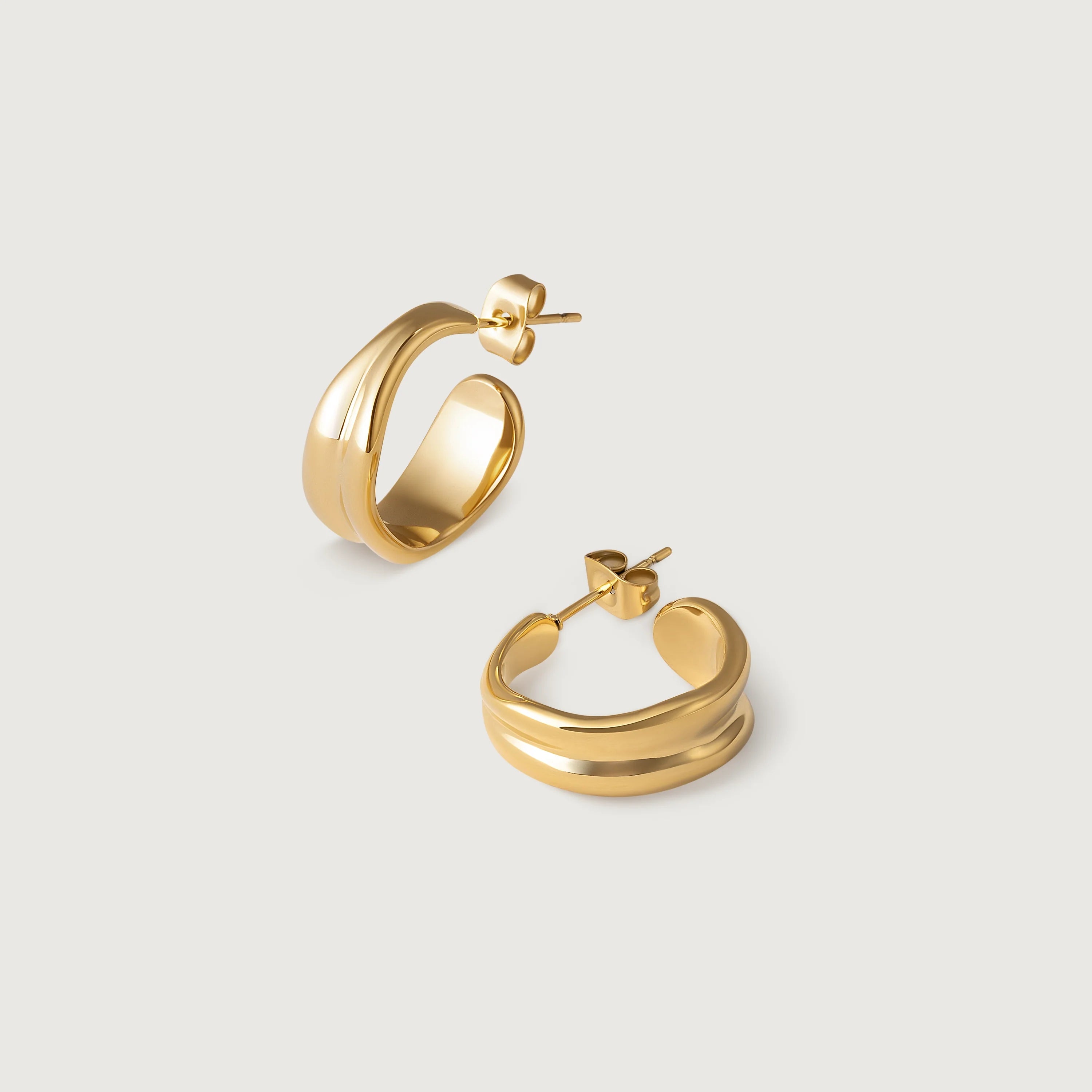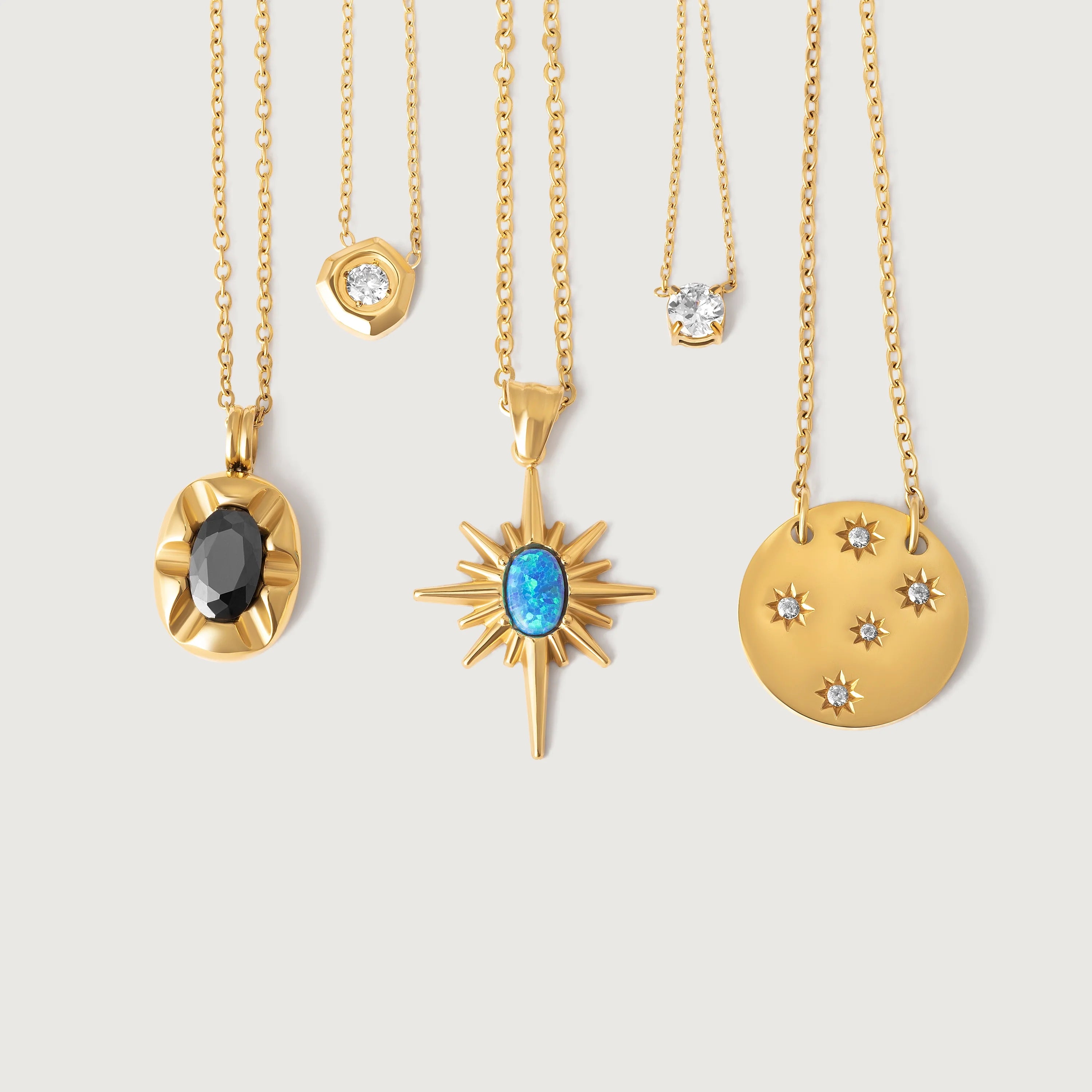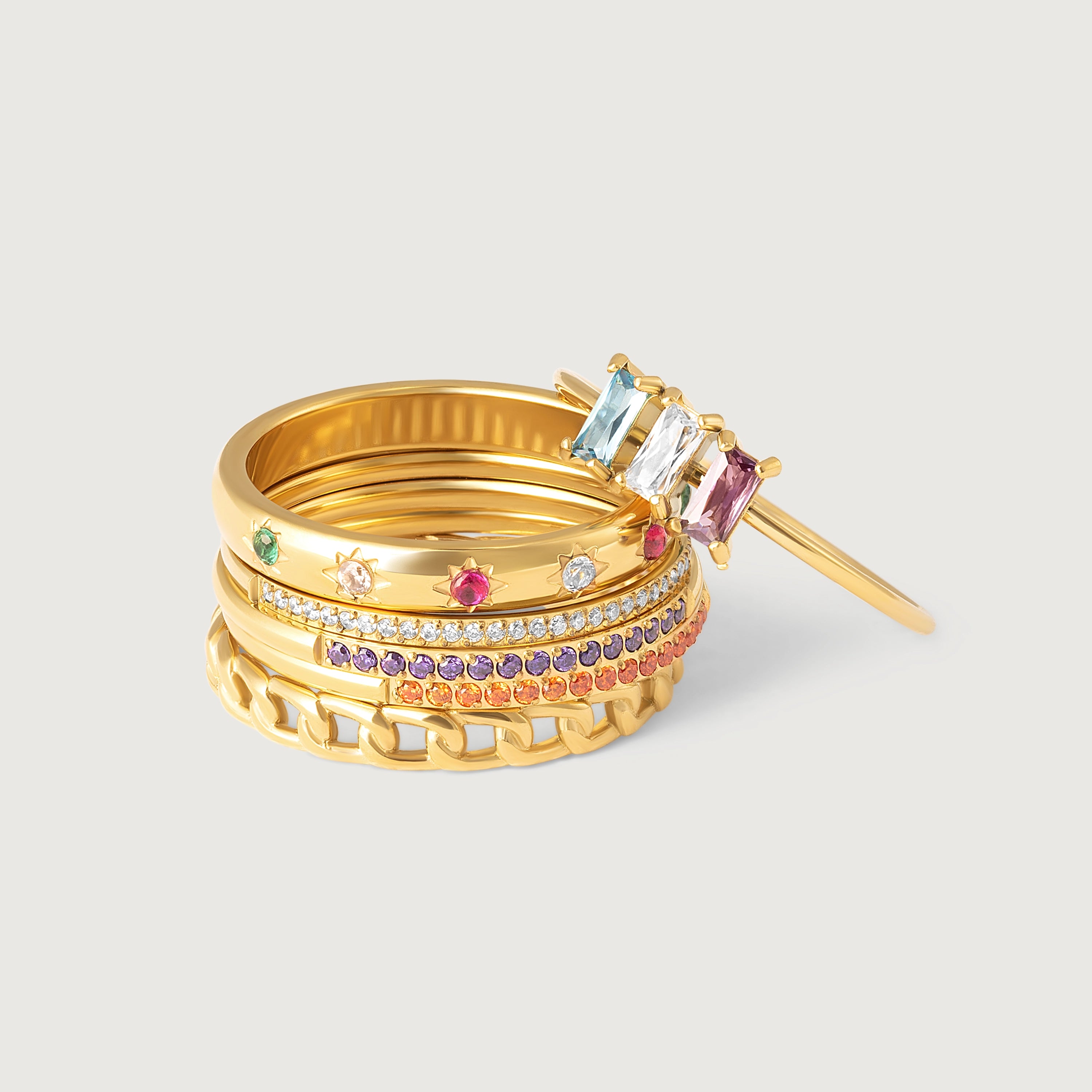Understanding Microns in Gold Plated Jewellery
Welcome to the world of microns – the unit of measurement that holds the key to understanding the quality and durability of gold plated jewellery. With UK consumers spending £9.7 billion annually on jewellery and almost two-thirds waiting for discounts before purchasing, understanding microns can transform how you shop for and appreciate plated pieces. This deep dive will demystify the micron, explain precisely how plating thickness impacts your jewellery's lifespan and its price tag, and empower you with the knowledge to choose pieces that truly meet your expectations.
UK Consumer Reality: With cost-of-living pressures affecting spending habits and half of UK consumers buying second-hand jewellery, understanding microns helps you make informed decisions about when thicker plating justifies a higher price—and when it doesn't.
What Exactly is a Micron in Jewellery Terms?
So, what is this magical micron? Scientifically, a micron (μm), also called a micrometre, is one-millionth of a metre, or one-thousandth of a millimetre.
To put that minuscule measurement into perspective:
Human Hair
50-70 microns thick - about 50 times thicker than premium plating
Paper Sheet
Around 100 microns thick - nearly 100 times thicker than flash plating
Gold Leaf
0.1-0.125 microns - even thinner than the thinnest jewelry plating
Premium Plating
2.5-5+ microns - substantial enough for lasting beauty
In the jewellery industry, microns are the standard unit used to measure the precise thickness of the layer of gold (or other metal) applied to the base metal during the electroplating process. Simply put: more microns mean a thicker layer of gold.

Why Thickness is King for Plated Jewellery Durability
Understanding the micron measurement is crucial because it directly correlates with how long your gold plated jewellery will last. The core principle is simple: gold plating, no matter how well applied, is a surface layer. It's constantly exposed to friction (rubbing against skin and clothes), chemical reactions (from sweat, lotions, perfumes), and general abrasion from daily life.
A thicker layer of gold plating provides more material to withstand this wear and tear. It simply takes longer for friction and chemical exposure to erode a thicker layer down to the point where the underlying base metal becomes visible. Think of it like painting a wall – a single thin coat might cover initially, but multiple thicker coats offer far superior protection and longevity against scuffs and fading.
Common Gold Plating Thickness Levels Explained
Gold plating isn't a one-size-fits-all process. Thickness can vary dramatically, impacting both durability and cost. Here's a breakdown of common ranges and what you can typically expect in the UK market:
Flash Plating (< 0.5 microns)
Description: This is an extremely thin layer, often significantly less than 0.5 microns (sometimes as low as 0.175). Its main purpose is often just to provide the initial gold colour.
Reality Check: Don't expect flash plating to last long at all. It can wear off within just a few wears, especially on high-contact items. The base metal's colour or tarnish may become visible very quickly.
Common Use: Found on very inexpensive costume or fashion jewellery where longevity is not a primary concern. Often seen in high street fast fashion accessories.
Standard Gold Plating (0.5 - 2.0 microns)
Description: This is the typical range you'll find for much of the gold plated fashion jewellery on the UK high street and online marketplaces.
Reality Check: With regular wear and tear, expect pieces in this range to show signs of fading or base metal exposure within weeks or months. Rings and bracelets will likely wear faster than earrings or necklaces due to higher friction exposure.
Common Use: Widely used for accessible, trend-driven fashion jewellery. The sweet spot for many UK consumers balancing cost and temporary style.
Heavy Gold Plating (2.0 - 3.0+ microns)
Description: As the name suggests, this involves applying a significantly thicker layer of gold. Pieces might sometimes be stamped HGP (Heavy Gold Plate) or HGE (Heavy Gold Electroplate).
Reality Check: This thicker layer offers a noticeable improvement over standard plating. With proper care, pieces can last many months or potentially a couple of years before significant wear becomes apparent.
Common Use: Found in better quality fashion jewellery or "bridge" lines that sit between costume and fine jewellery. Increasingly popular with UK consumers seeking longevity.
Gold Vermeil Minimum (2.5+ microns)
Description: Gold Vermeil has a legally defined standard requiring at least 2.5 microns of gold plating (minimum 10k) over a sterling silver base. By definition, vermeil is a form of heavy gold plating.
Reality Check: Offers excellent durability thanks to this regulated minimum thickness combined with a quality base metal. The gold standard for plated jewellery.
Learn More: Discover everything about this premium standard in our guide: What is Gold Vermeil?
Premium/Custom Plating (5+ microns)
Description: While less common for typical fashion jewellery due to cost, plating of 5 microns or even more can be found, especially on higher-end designer fashion pieces, watch cases, or offered as a premium custom option.
Reality Check: Offers the best possible longevity within the plated category, potentially lasting several years with reasonable care before needing attention. Investment-level plating.
Common Use: Premium fashion/designer jewellery, high-quality watch components, bespoke pieces.
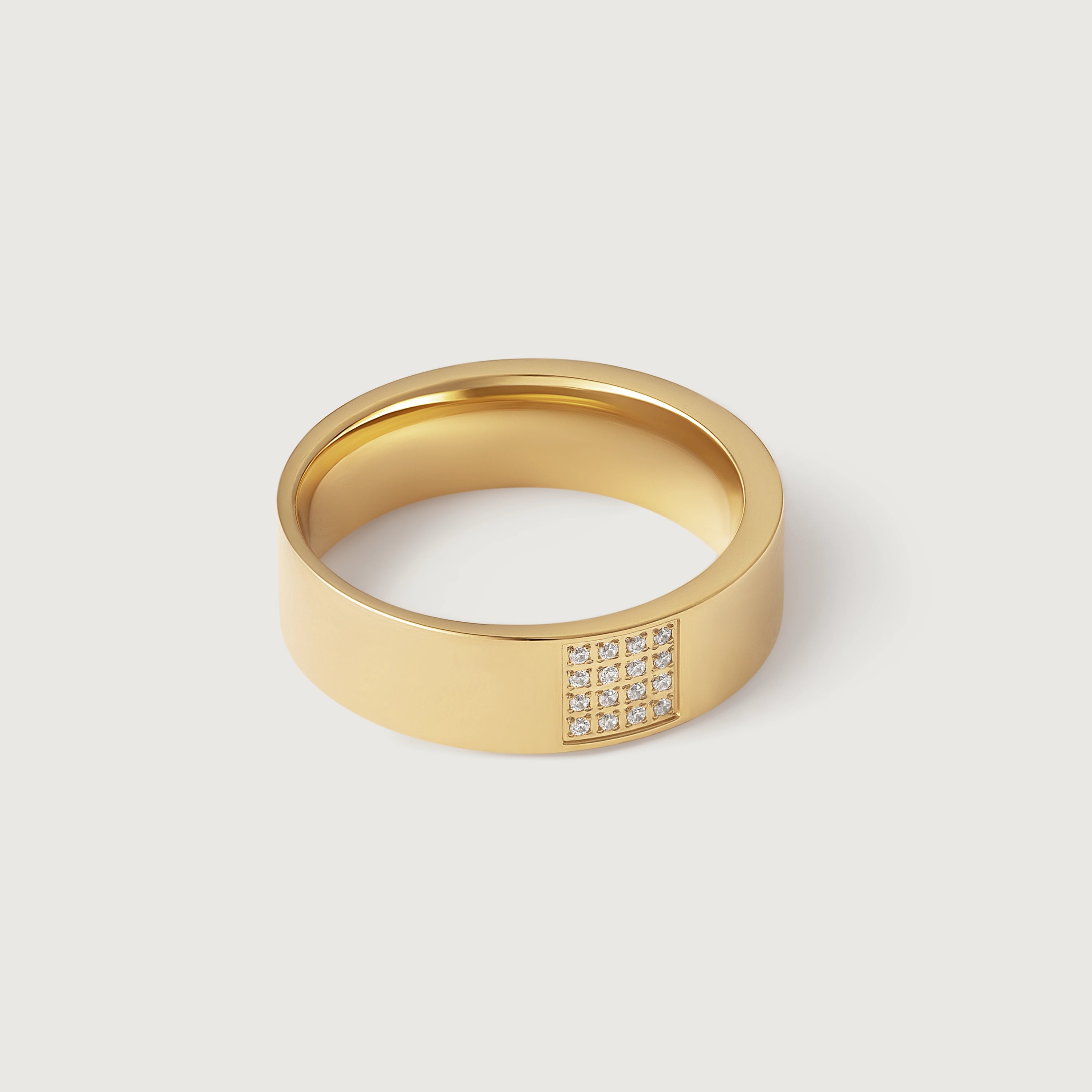
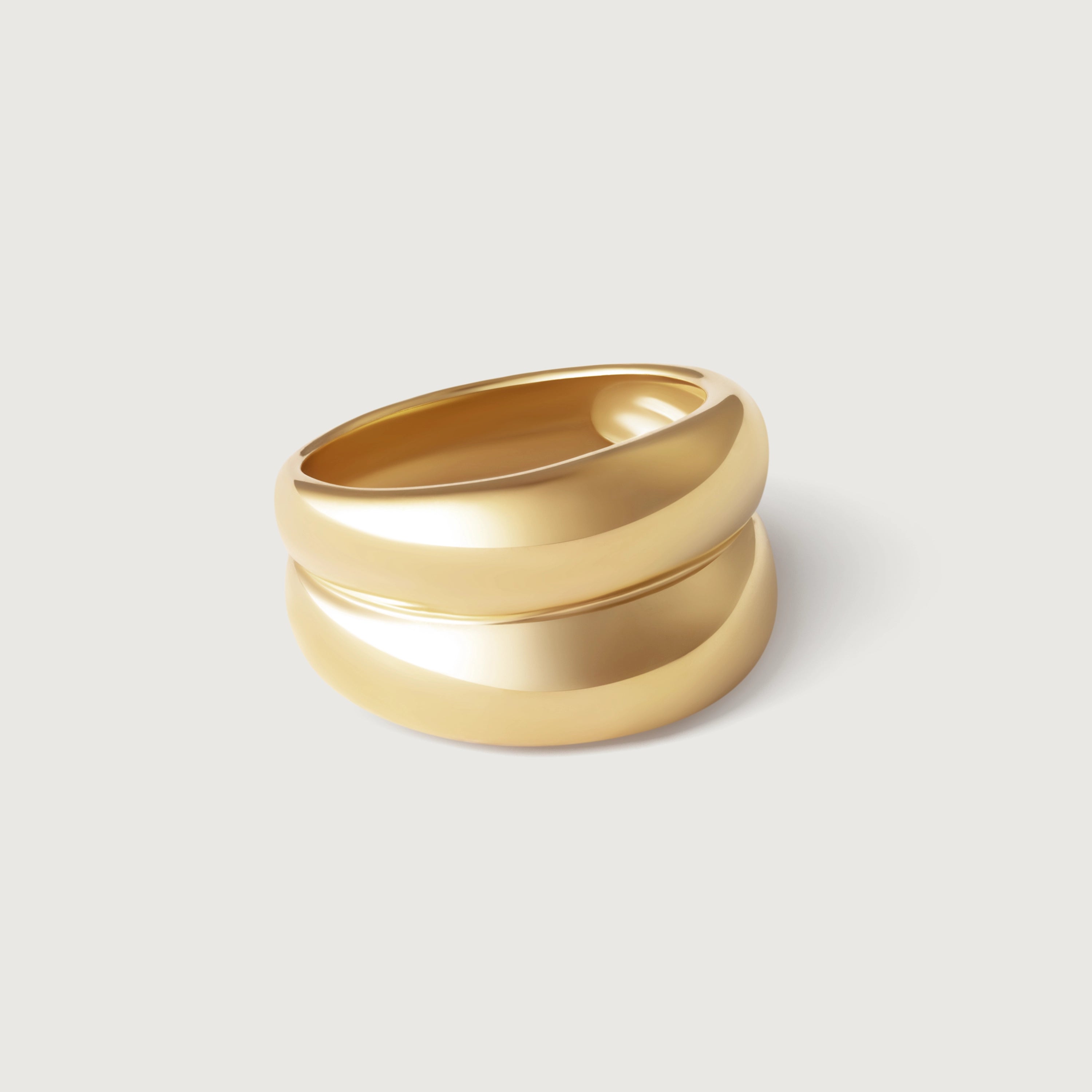
The Thickness-Price Connection for UK Consumers
It logically follows that applying more gold costs more. Gold is a precious metal with significant market value, and this becomes particularly important for UK consumers facing cost-of-living pressures.
UK Market Reality: With almost two-thirds of UK consumers waiting for discounts before buying jewellery, understanding the thickness-price relationship helps you identify genuine value versus inflated pricing during sales periods.
What Drives Plating Costs?
- Material Cost: A 3-micron layer uses substantially more gold than a 0.5-micron layer
- Process Time: Thicker plating often requires longer processing times in the electroplating bath
- Quality Control: Premium plating requires more stringent testing and finishing
- Base Metal Quality: Better base metals (like sterling silver for vermeil) increase costs but improve longevity
This translates directly to the retail price: Higher micron thickness = Higher production cost = Higher price tag. Understanding this connection helps justify why some gold plated pieces carry a higher price than others. That extra cost often reflects a tangible difference in the amount of gold used and, consequently, the piece's expected durability.
How Does Plating Thickness Affect Sensitive Skin?
While the type of base metal is the primary concern for allergies, plating thickness plays an important secondary role, especially relevant for UK consumers with sensitivities.
A thicker gold layer acts as a more robust and longer-lasting barrier between your skin and the potentially irritating base metal underneath (like nickel or copper alloys). Thin plating wears away quickly, exposing the base metal sooner and potentially triggering a reaction. Thicker plating significantly delays this exposure, giving sensitive skin wearers a much longer period of comfortable, reaction-free wear.
Recommendations for Sensitive Skin
- Minimum 2.5 microns: Choose Vermeil standard or better for daily wear pieces
- Quality base metals: Look for sterling silver or stainless steel bases, not brass or copper
- Avoid flash plating: Never worth the risk for sensitive skin, regardless of price
- Consider PVD coating: Modern alternative that provides superior protection
Finding Thickness Information When Shopping in the UK
So, how can you, the savvy UK shopper, determine the plating thickness? Here's your practical guide:
Red Flags for UK Shoppers
- No micron information provided despite premium pricing
- Terms like "real gold" without specifying plating thickness
- Suspiciously low prices for claimed "heavy" plating
- Reluctance to answer direct questions about thickness
- Focus on appearance without mentioning durability
Smart Shopping: Choosing the Right Microns for Your Needs
Not every piece needs maximum microns. Here's how to match thickness to your intended use:
Flash Plating: When It Makes Sense
Best For: Costume jewelry for one-off events, children's jewelry, trend pieces you'll wear 2-3 times max
Budget Impact: Minimal investment, minimal expectations
Standard Plating: The Middle Ground
Best For: Seasonal accessories, workplace jewelry with moderate wear, pieces to test new styles before investing in premium versions from collections like our gold necklaces or earrings
Budget Impact: Reasonable cost for temporary fashion needs
Heavy Plating: The Sweet Spot
Best For: Regular wear pieces, vacation jewelry, gifts for others, building a capsule jewelry wardrobe
Budget Impact: Higher upfront cost justified by longer lifespan
Vermeil: Investment Quality
Best For: Daily wear staples like classic gold rings and necklaces, professional jewelry, pieces with sentimental value, sensitive skin
Budget Impact: Premium pricing but excellent cost-per-wear ratio
Frequently Asked Questions
How many microns should I look for in quality plated jewelry?
For pieces you'll wear regularly, aim for minimum 2.5 microns (Vermeil standard). For occasional wear, 1.5-2 microns is acceptable. Avoid anything under 0.5 microns unless it's purely decorative.
Can I tell plating thickness just by looking at jewelry?
No, micron thickness is invisible to the naked eye. Two identical-looking pieces can have vastly different plating thickness. Always check product specifications or ask the seller directly.
Do more microns always mean better quality?
Generally yes, but the base metal quality matters too. 2.5 microns over sterling silver (Vermeil) is better than 3 microns over brass. The complete construction determines overall quality.
Is it worth paying extra for thicker plating in the UK market?
Absolutely, if you plan regular wear. With UK jewelry spending at £9.7 billion annually and cost-of-living pressures, choosing thicker plating means better cost-per-wear value and fewer replacement purchases.
How does UK humidity affect plating wear?
The UK's generally humid climate can accelerate tarnishing of base metals once plating wears thin. Thicker plating provides longer protection against moisture-related damage, making it especially valuable in British conditions.
What's better: thick traditional plating or modern PVD coating?
Modern PVD coating technology often outperforms even premium traditional plating in durability and water resistance. While traditional plating adds actual gold layers, PVD creates molecular bonds that can last years with daily wear.
At Kaleya Studio, we believe in transparency about our construction methods. Our advanced PVD coating technology delivers durability that surpasses traditional heavy plating while maintaining the luxurious appearance UK consumers expect. Every piece clearly specifies its coating technology, ensuring you make informed decisions.
Beyond Microns: The Future of Durable Gold Jewelry
While understanding microns remains crucial for traditional plated jewelry, technology has evolved. Advanced coating methods like Physical Vapor Deposition (PVD) create molecular bonds rather than simply layering metal, often providing superior durability to even thick traditional plating.
Conclusion: Microns Matter for Smart UK Shoppers
In the dazzling world of gold plated jewellery, the real magic often lies in the microns. This tiny unit of measurement is a powerful indicator of the quality, durability, and ultimately, the value you're receiving. While all plating is a surface layer destined to wear over time, the thickness of that layer directly dictates how long you can enjoy its golden beauty.
For UK consumers navigating cost-of-living pressures while maintaining style, understanding microns becomes even more crucial. With almost two-thirds of shoppers waiting for discounts and half exploring second-hand options, knowing when thicker plating justifies higher pricing helps you make informed decisions that deliver genuine value.
Remember the key takeaway: more microns generally equal better durability and often correlate with a higher price. Flash plating offers fleeting colour, standard plating provides temporary style, while heavy gold plating and especially Gold Vermeil deliver significantly longer wear thanks to their substantial gold layers. By learning to look for micron information, understand the different tiers of thickness, and ask the right questions, you can move beyond simply being attracted by the colour and make informed choices that align with your expectations, lifestyle, and budget.
Experience Beyond Traditional Plating
While understanding microns helps you navigate traditional plated jewelry, Kaleya Studio's advanced PVD coating technology transcends these limitations. Discover jewelry that combines the beauty of gold with durability that outperforms even premium traditional plating—perfect for UK consumers who demand both style and substance in uncertain times.
